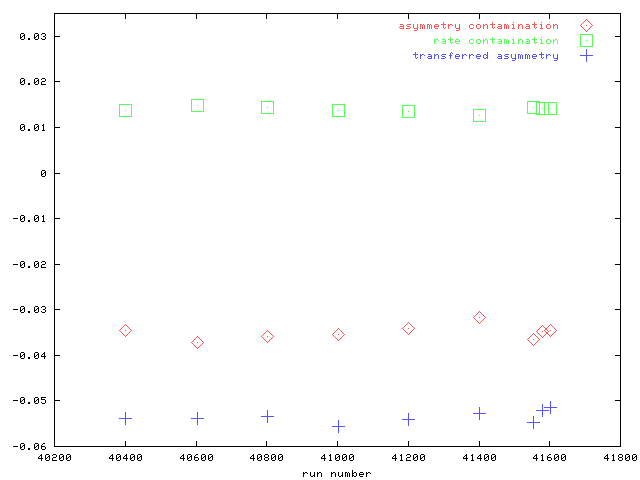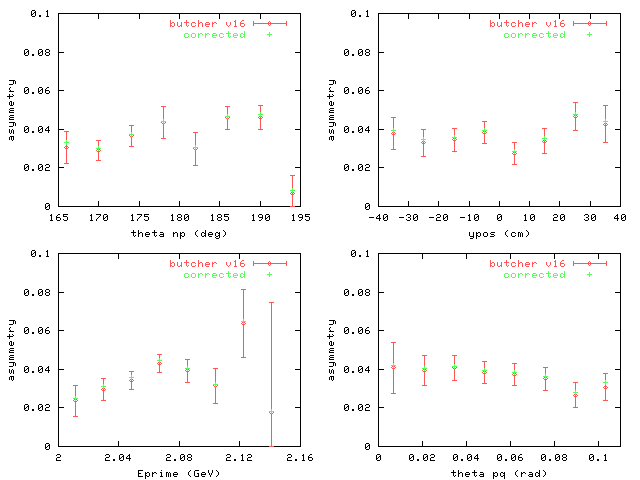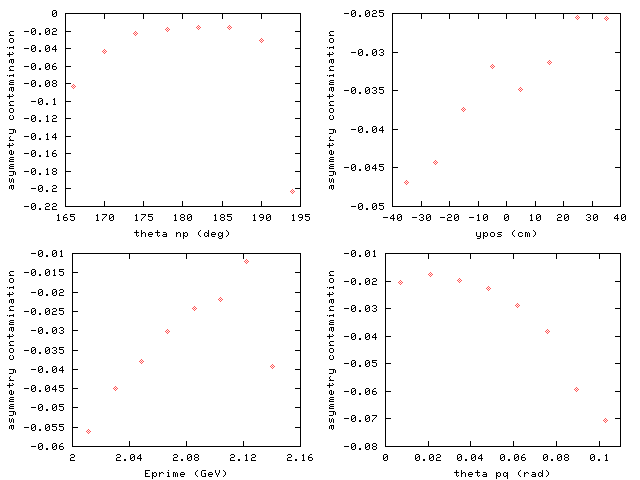- in the lead shielding in front of the neutron detector:
- d(e,e'p) followed by Pb(p,n)
- d(e,e'p) followed by Pb(p,Pi0) and Pi0 -> gamma + gamma
- in the N15D3 target
- d(e,e'p) followed by N15(p,n)
First estimates of Pb(p,n) revealed that this effect is not neglible.
Based on that a simulation code was written to determine correction
factors for Pb(p,n) contamination.
The magnitude of the Pb(p,n) cross section is determined from
results of charge exchange studies that were done by Basel for the GMn
experiment. The net contamination in asymmetry due to Pb(p,n)
is -3.44 +- 1.02% for Q2=0.5. The error is dominated by
the uncertainty in the cross section
For Q2=1 the simulation has not been run. A very
conservative estimate based on a comparison to the Q2=0.5 case
gives a contamination of -3 +- 3%.
The N15(p,n) contamination is small and is estimated to be -0.3% +-
0.3% for Q2=0.5 and Q2=1.
Photon contamination is neglible for
Q2=0.5 and about one order of magnitude smaller than from Pb(p,n)
for Q2=1. These estimates are based on total cross section of
proton induced Pi0 productions.
- Q2=0.5:
Each bin is corrected individually according to the values which can be found here
Additionally an overall correction of -0.3% is applied.
The total uncertainty of the correction is 1.06% (absolute)
- Q2=1:
An overall correction of -3.15% is applied.
The uncertainty is 3.01% (absolute)
Rate contamination = neutrons from Pb(p,n) / standard neutrons
Transferred asymmetry = Average asymmetry carried by Pb(p,n) contamination.
 postscript
postscriptThis plot shows the net effects vs. run number for the run period Q2=0.5.
The size of the contamination was constant over time.
 postscript
postscriptThis plot shows butcher v16 asymmetries and asymmetries corrected for Pb(p,n) contamination for our standard binning of the ususal four kinematic variables.
 postscript
postscriptThis plot shows asymmetry contamination due to Pb(p,n) for our standard binning of the usual four kinematic variables.